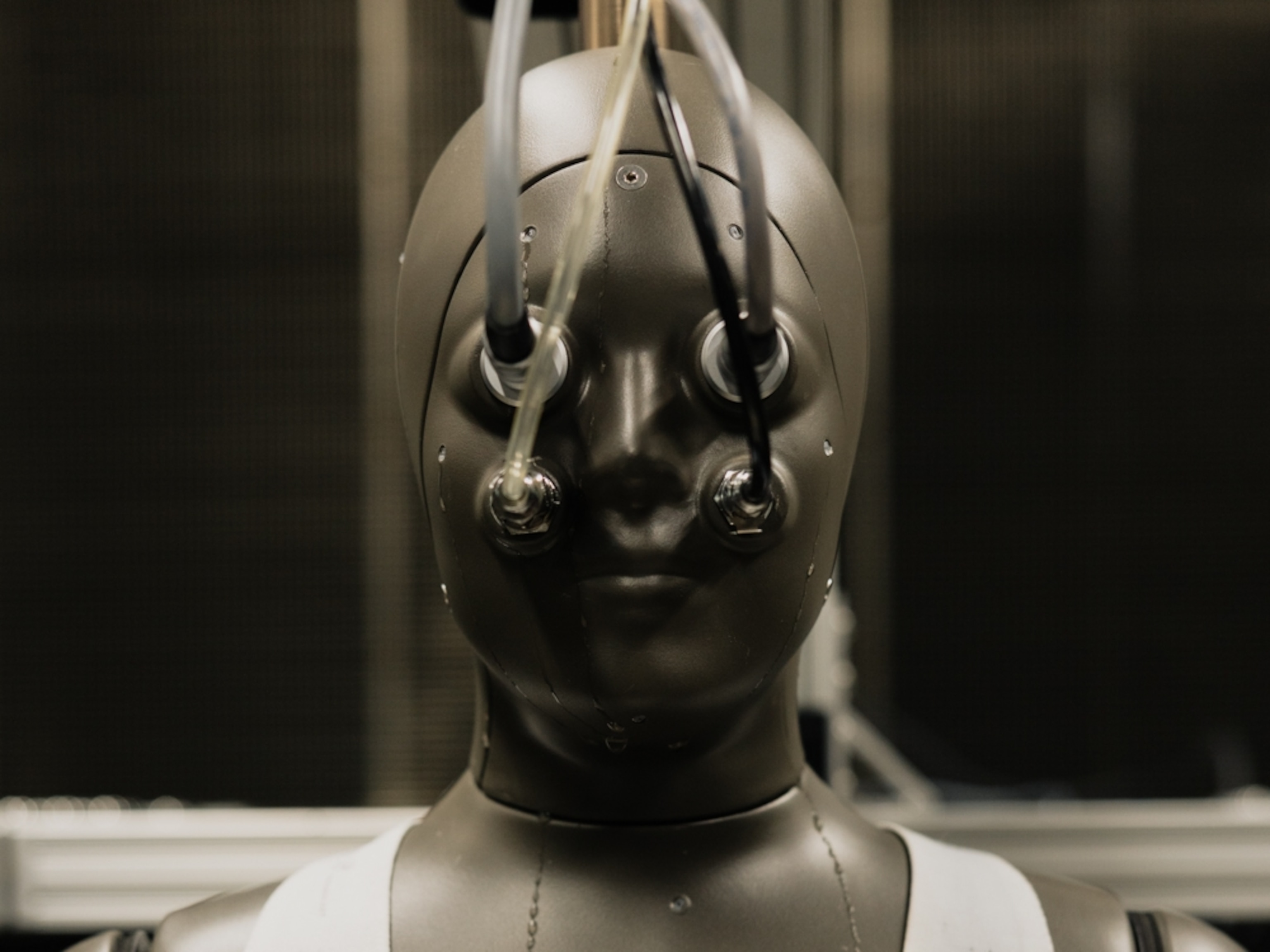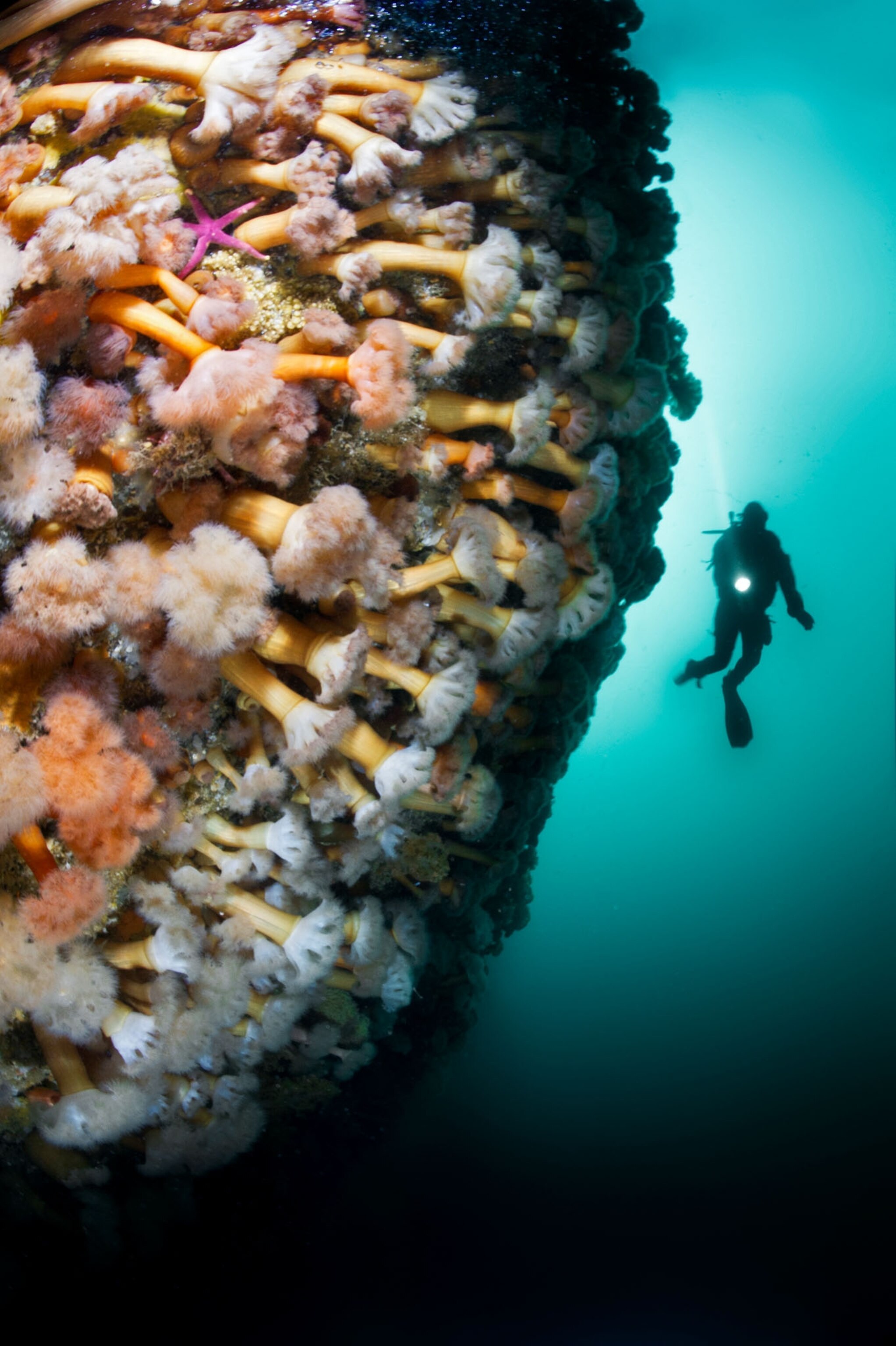
‘The biggest story on Earth is Earth itself.’
– David Doubilet
National Geographic produced this expanded version of Field Notes as part of a partnership with Rolex.
Featured explorers

A Partnership to Advance Exploration
‘The Pole at last!’ That note in Robert Peary’s diary proclaimed his team’s discovery of the North Pole, on a 1909 expedition sponsored by the National Geographic Society.
On May 29, 1953, Edmund Hillary and Tenzing Norgay became the first climbers to summit Mount Everest, as part of an expedition team sponsored and equipped by Rolex.
Together National Geographic and Rolex have more than 200 years of experience supporting expeditions and explorers. Now they’re building on that legacy with a unique partnership.
As both did in the 20th century, Rolex and National Geographic will continue to support the pioneers who explore uncharted realms. But now the partnership will also undertake a broader mission. Along with exploring Earth’s wonders, it will seek to deepen people’s scientific understanding of those wonders—and their commitment to protecting them.
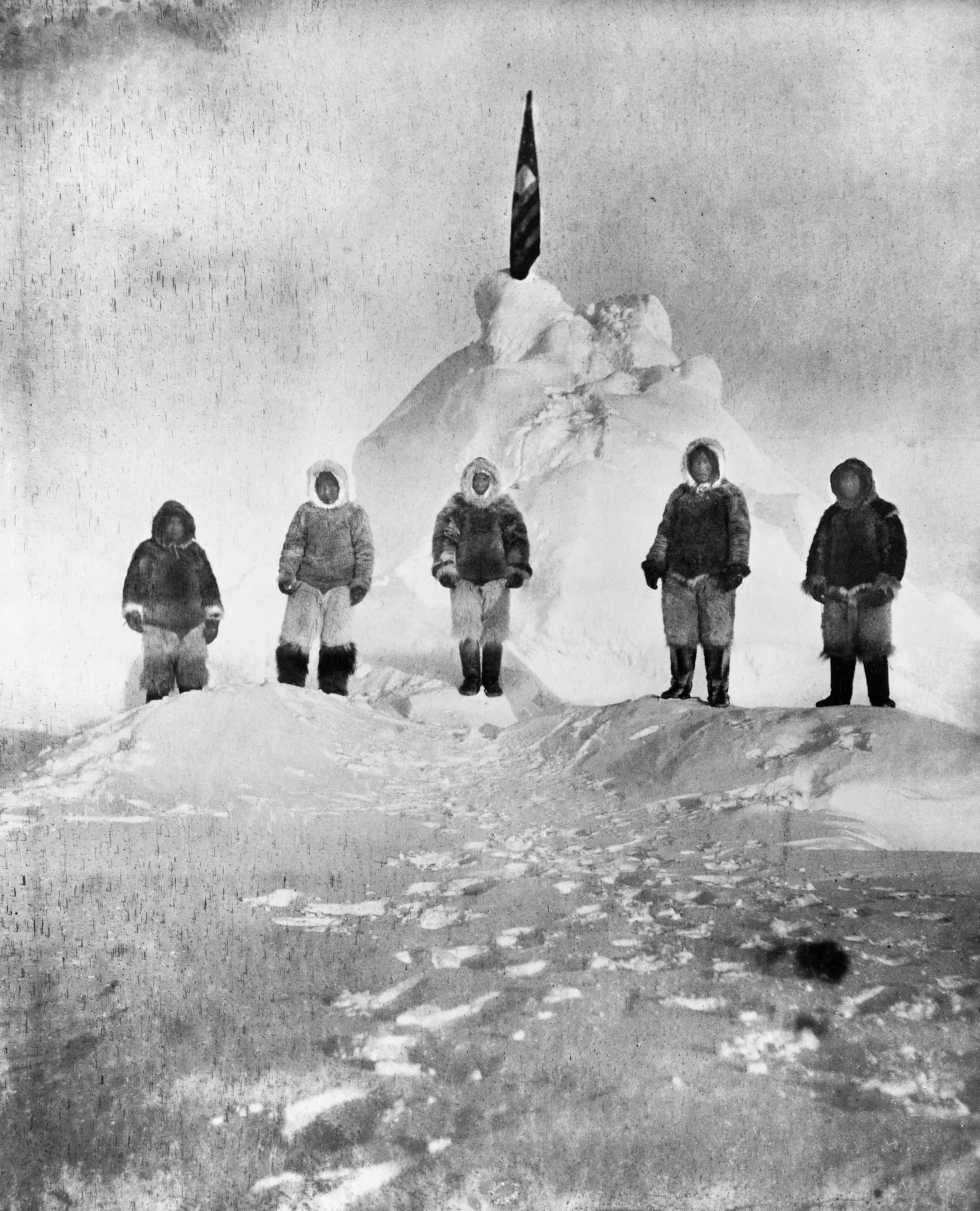
The partners will support conservation and exploration efforts around three critical areas: Earth’s oceans, its poles, and its mountains. In each area Rolex and National Geographic will
• Enable and join expeditions led by inspiring scientists and storytellers;
• Support research that could lead to scientific discovery, new technologies, and innovative solutions;
• Convene summits and activities that inform and educate the public.
The work on oceans is already under way. At nationalgeographic.com, we’re publishing new content inspired by our partnership, including ocean-related photography, articles, graphics, and reference materials. The website will be regularly replenished with new coverage, which will also be shared via social media channels. In time it likely will offer videos and virtual reality experiences, television programs, films, and more.
Both partners have long had alliances with leading figures in ocean exploration. Among them: oceanographer Sylvia Earle, who has worked with Rolex since 1970; oceanographer Don Walsh, who in 1960 reached the deepest part of the ocean in a bathyscaph; filmmaker James Cameron, who in 2012 piloted a one-person submersible to the same historic ocean depths; and underwater photographer Brian Skerry, the Rolex National Geographic Explorer of the Year for 2017.
Together Rolex and National Geographic are committed to inspiring and assisting new generations of explorers. The men and women below typify the passion and ambition at the heart of this partnership. It’s our pleasure to share their stories. —The Editors
20,000 Leagues Over the Sea
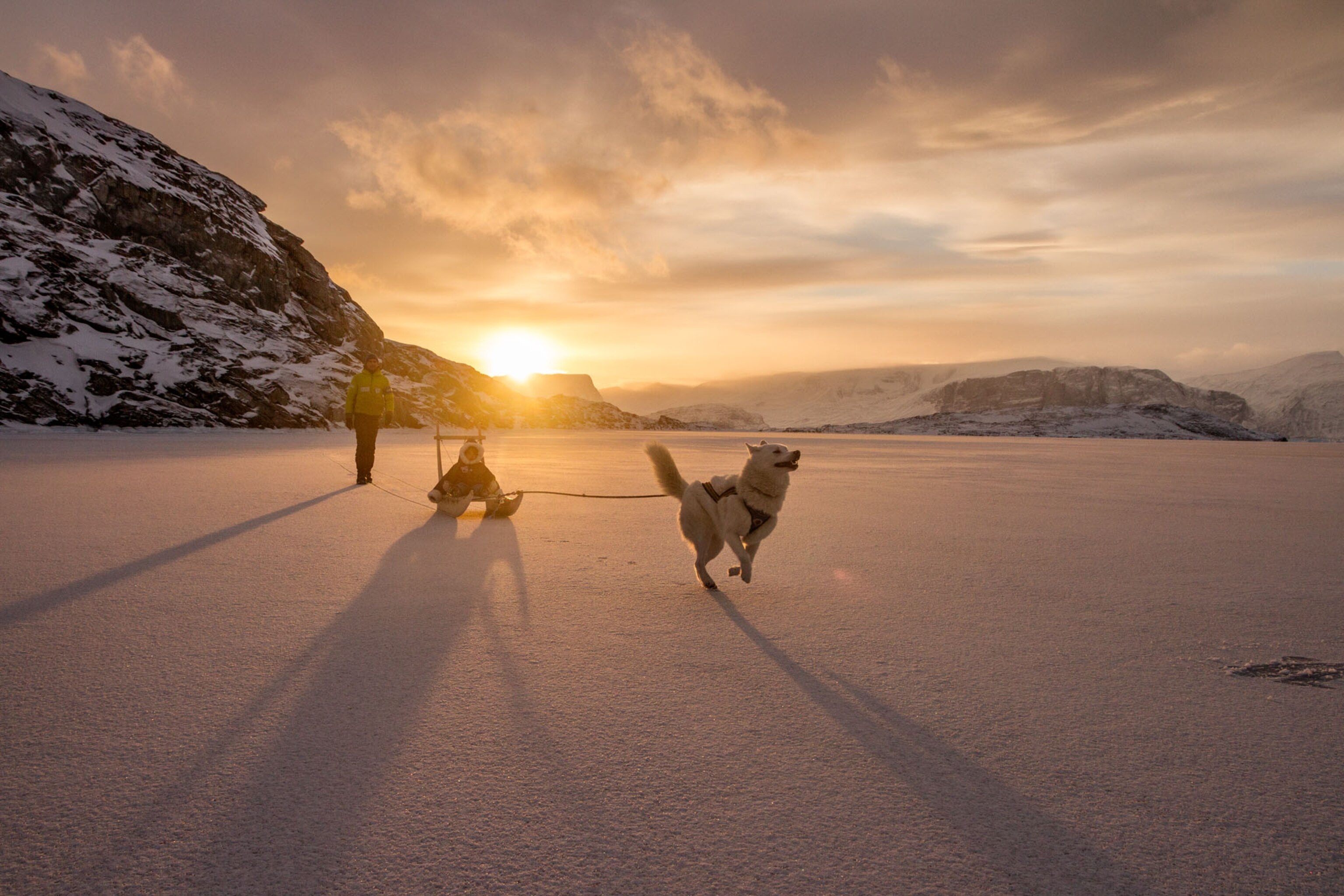
Ghislain Bardout and his wife, Emmanuelle Périé-Bardout, have explored under the Arctic ice cap, with support from Rolex. Now they’re on a three-year mission to cross every latitude, from the high Arctic to the shores of Antarctica. Along the 50,000-mile journey, they’ll dive in some of the planet’s most remote waters, to depths rarely reached by humans.
The couple and their team plan to explore ecosystems in the ocean’s twilight zone, a realm that most light never reaches. They’re also building an underwater “capsule” that would allow divers to stay underwater for a few days.
Their last stop this year was in Alaska, where they moored for the winter; in March they’ll head for Polynesia. Along for the ride: their sons, ages five and one.
Crusading for At-Risk Sharks
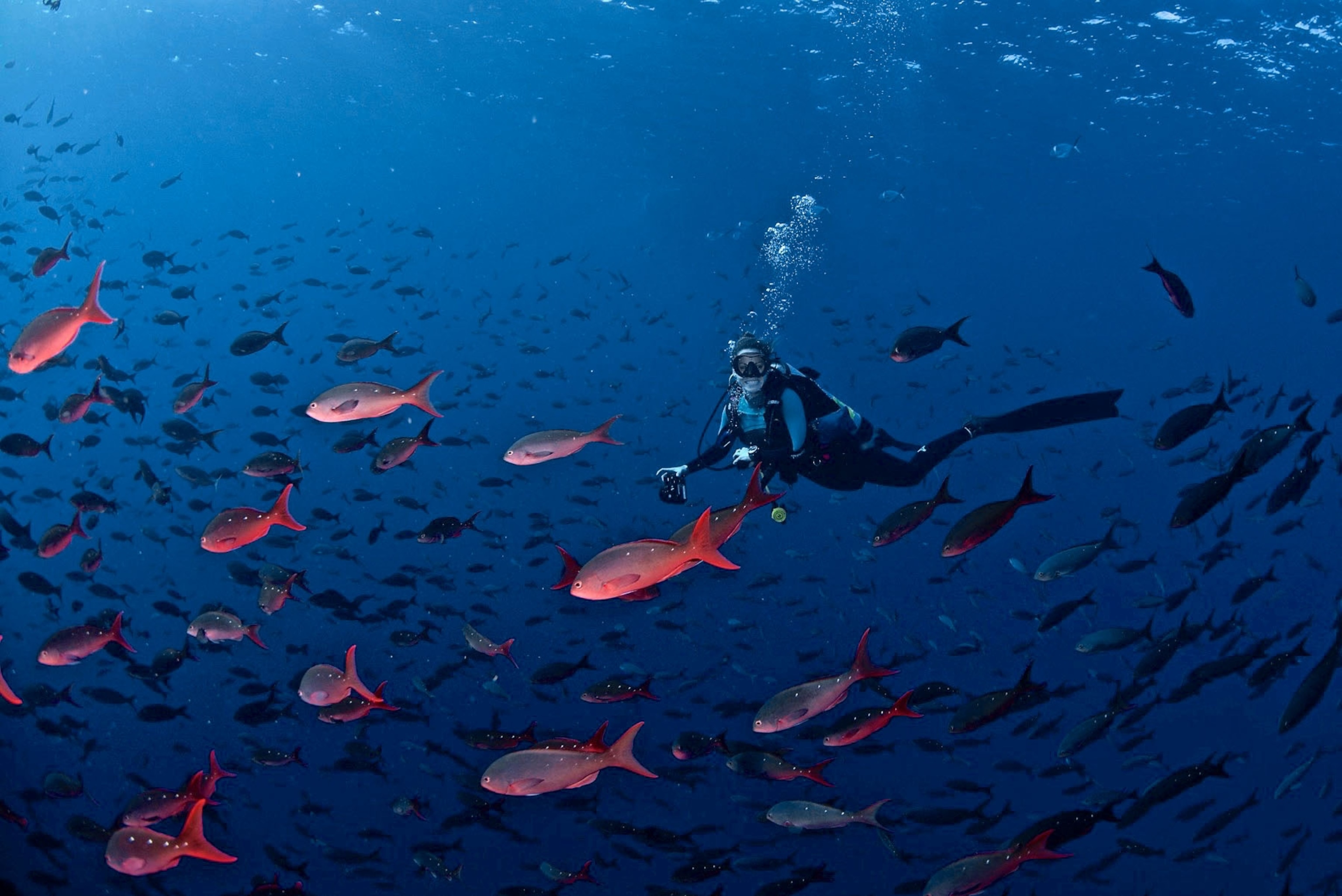
The Cook Islands are a long way from the San Diego drug discovery lab where Jessica Cramp once worked. Eager to put her training to more tangible use, she traded her day job for a life helping protect sharks—animals she has said sparked her interest in ocean issues.
A childhood fan of Jacques Cousteau, Cramp moved to Rarotonga Island in the South Pacific’s Cook Islands, where she successfully campaigned to ban the commercial shark trade throughout the Cook Islands and helped designate a 772,204-square-mile shark sanctuary.
Since then Cramp has founded a research, outreach, and advocacy organization called Sharks Pacific. Via her computer, she uses satellites to track the movements of tagged migratory sharks and studies how to best design policies to protect the threatened creatures. “I’m interested in finding the right balance between sharks, fish, and people—because people have to be considered as a part of the ecosystem,” she says. By drawing these connections, she plans to continue to “mainstream the ocean.”
Charting Marks on Sea Giants
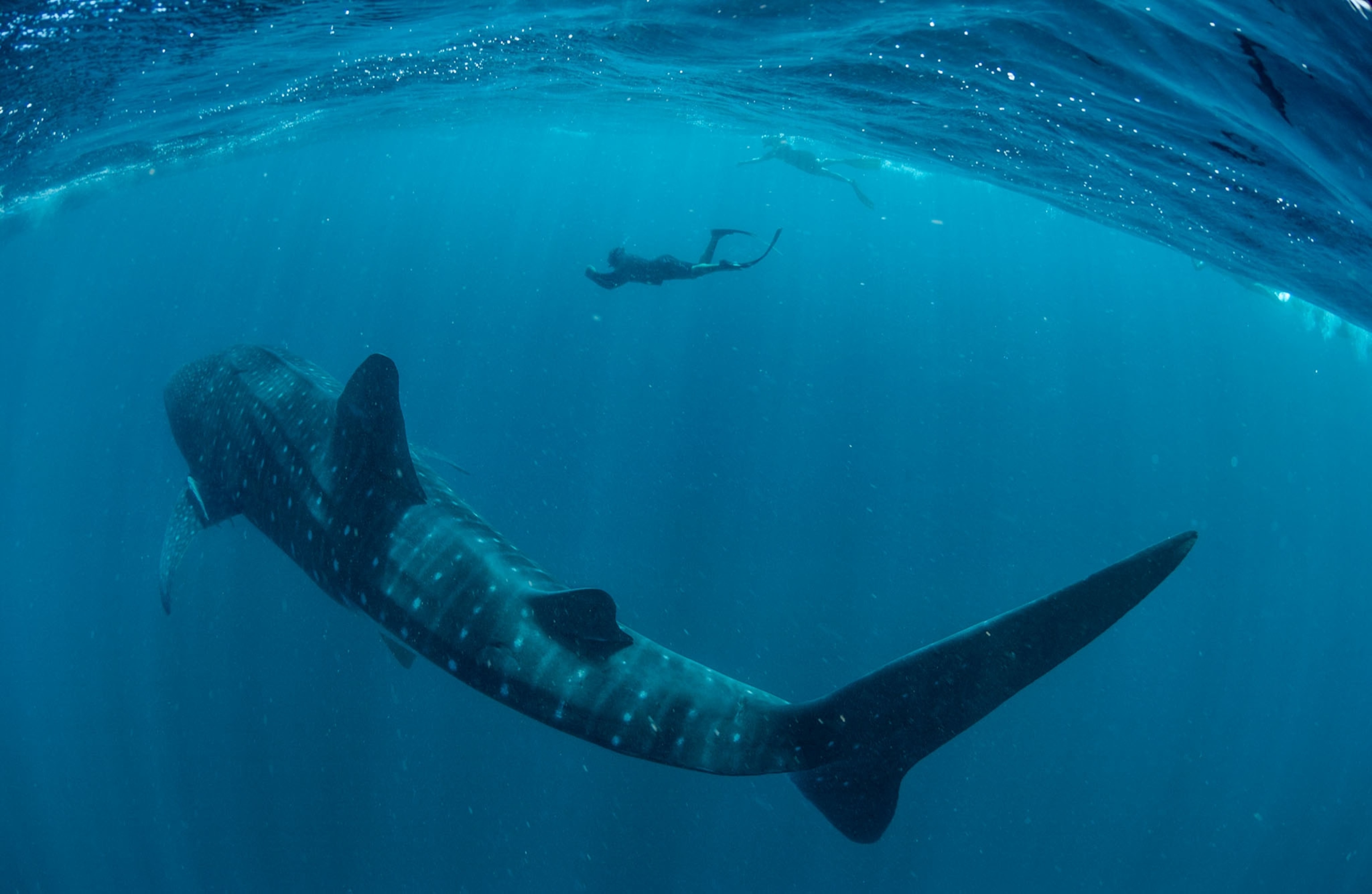
The whale shark is one of the ocean’s most mysterious animals, but Australian marine biologist Brad Norman has been slowly unraveling its secrets for nearly a quarter century.
The constellation-like patterns on each whale shark are as unique as a human fingerprint. With that in mind, Norman helped specialists rejigger an astronomical algorithm into a search tool that scans photos to identify individual sharks—vital knowledge for large-scale tracking and conservation.
He’s also mustered an army of citizen scientists, including kids. Inspiring others “to help save the biggest fish in the sea, and the natural environment it relies on, is a joy and a privilege,” he says.
Norman, a Rolex Awards for Enterprise laureate, worked to get whale sharks listed as endangered and says he’s now trying to solve some of the biggest mysteries in their movements: “We’re embarking on an ambitious program to hopefully uncover the ‘holy grail’: Where do whale sharks go to breed?” Stay tuned.
The Animal Empathizer
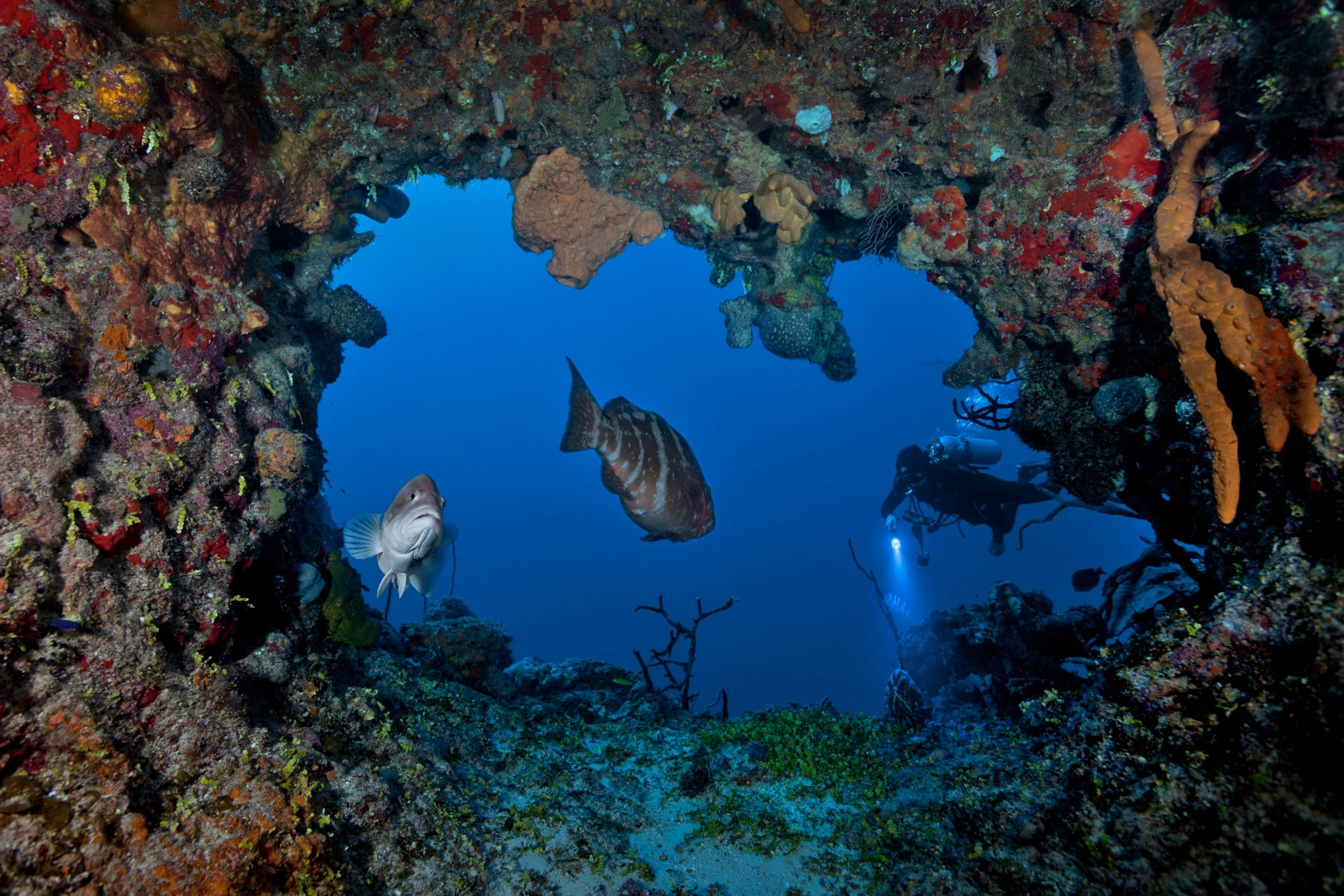
“I try to see the ocean through the eyes of sea creatures,” says marine biologist David Gruber. That inquisitive attitude is what drove the National Geographic emerging explorer to build an underwater camera that simulates the vantage point of a turtle. Gruber and his team began working on the camera in 2015, after his groundbreaking discovery of a biofluorescent hawksbill sea turtle in the Solomon Islands.
Gruber also helped create something he calls a “squishy robot hand.” Made mostly of silicone rubber with “fingers” that can grab and curl, the tool allows him to collect and study samples of delicate sea coral without damaging them. He expects to develop other soft robots to further his research on jellyfish.
Over the next few months, visitors to the National Geographic Ocean Odyssey exhibit in New York City will get to see Gruber’s latest work—on flashlight fish in the South Pacific and how they communicate with each other. It’s all part of his larger vision, he says, of “exploration that raises empathy.”
Democratizing Ocean Science

“There has never been a more exciting time for conservation technology,” says Shah Selbe. Last year the former rocket scientist founded Conservify, a lab that focuses on using open-source technologies—satellite data, sensors, drones, and apps—to better equip citizen scientists.
The company is currently creating low-cost GPS trackers that can be hidden among shark fins to track the illegal trade. Another project: developing a long-distance system that uses drones to monitor marine-protected areas.
The lab has recently produced a drone that, as Selbe explains, takes “a real-time acoustic image of the area around it, like a bat, and can fly in tight spaces, such as caves.” It’s not rocket science—but it’s just as impressive.
Deep-Sea Sound Check
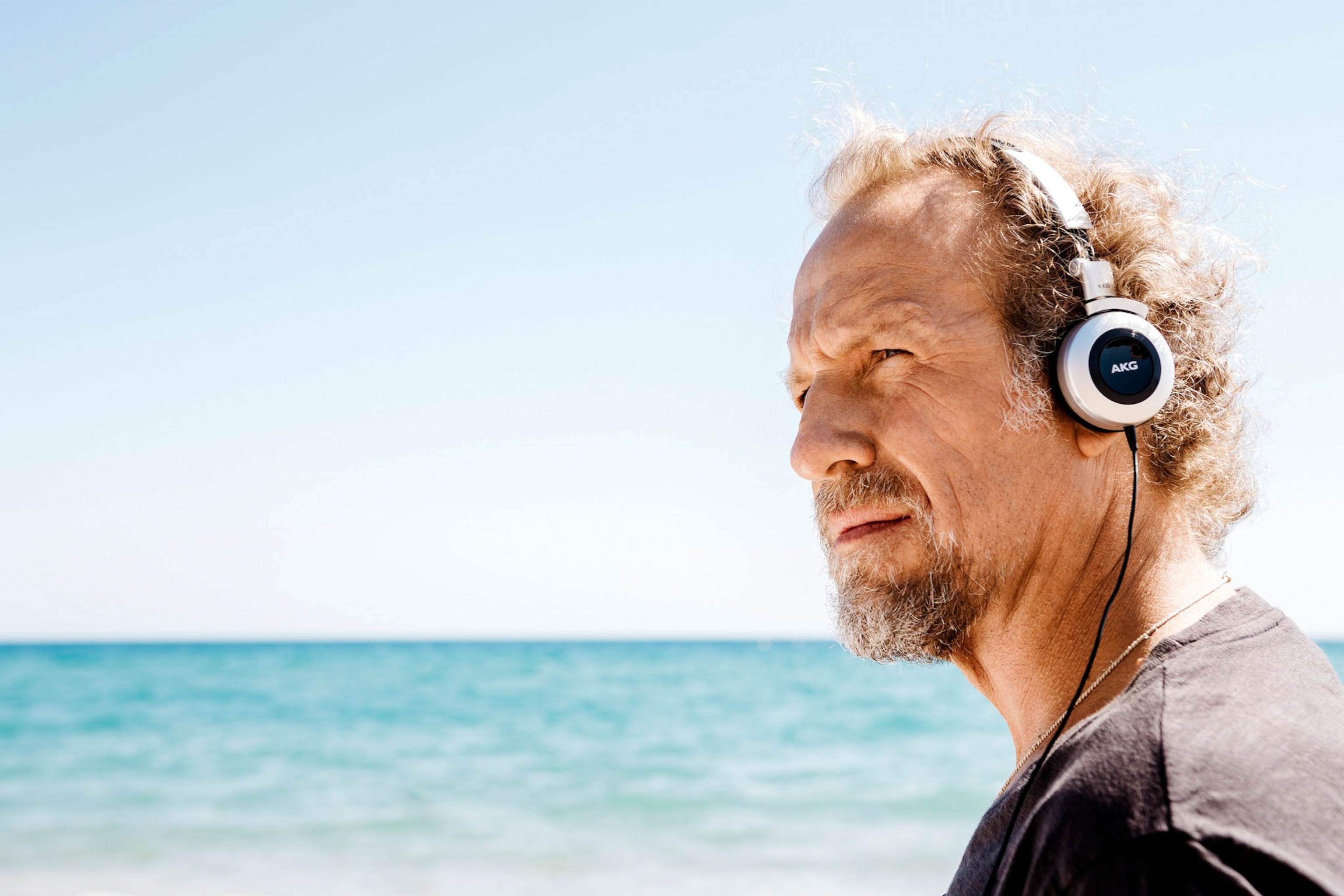
The ocean is never as silent as it seems. Natural noises from creatures, storms, and earthquakes, plus sound from thousands of ships as well as underwater drilling and dredging, can make quite a racket. For animals like whales and dolphins that use sound to navigate, the cacophony blunts that ability and can cause long-term physiological effects.
A bioacoustician and a Rolex laureate, Michel André studies the sound of the oceans along shipping lanes, in popular ports, and in remote parts of the planet. “For several decades,” he says, “we’ve known that the effects of artificial noise produced by human activities are affecting the whole food chain.”
André’s goal isn’t to eliminate the noise but to find ways to reduce its damage. His team developed a system called LIDO—Listening to the Deep Ocean Environment—to collect sound data from 22 underwater observatories and then compare it with migration patterns. Knowing where the animals are can allow ships to alter their course just enough to make a difference.
Diving Deep in Chile’s Fjords
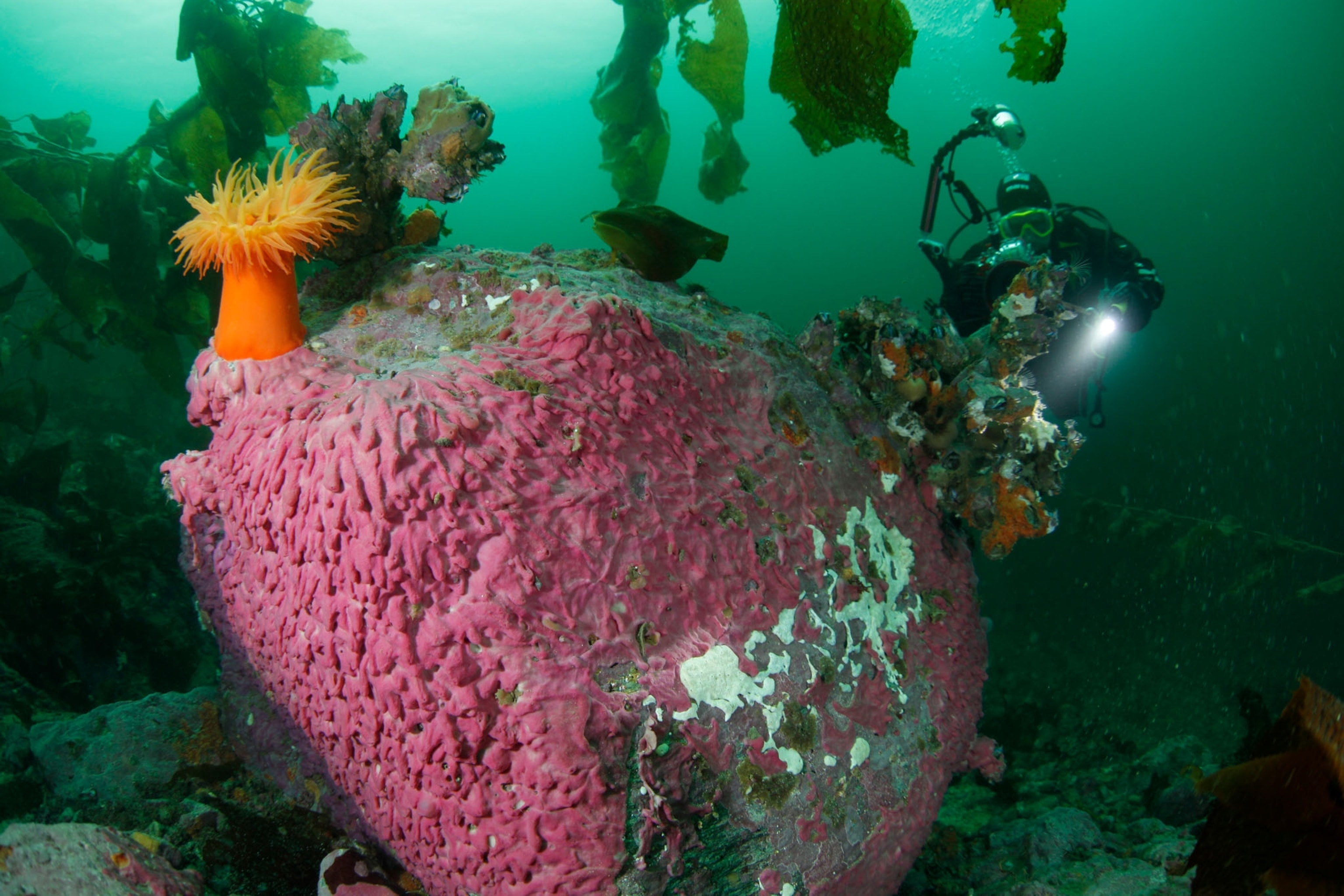
Chile’s Patagonia—with its mountains, islands, and fjords—is one of the world’s wildest places. But the rugged region is undergoing a frightening transformation, according to biologist Vreni Häussermann, who began studying its marine life in 1997.
In Chile’s fjords, coral banks are dying, the waters are muddied by boats and trash, and fish have been farmed en masse. The pollution is so bad that it’s causing mass die-offs: In 2015 Häussermann and colleagues discovered 337 dead whales.
Häussermann hopes that documenting the underwater life of the fjords will help save them. Previously, the Rolex laureate’s research took her only 100 feet underwater, but now she’s preparing to explore 1,600 feet below the fjords’ surface with the help of a remote-operated submarine. The project will upload photos and videos to Google Earth and YouTube to “show the beauty of Chilean Patagonia to the Chilean public and decision-makers,” Häussermann says.
She hopes the images will fuel efforts to declare the region a protected area before it’s too late to reverse the damage. But first, she says, access to the fjords should be limited “because we do not know how to sustainably use the region.”
Swimming With the Sunfish
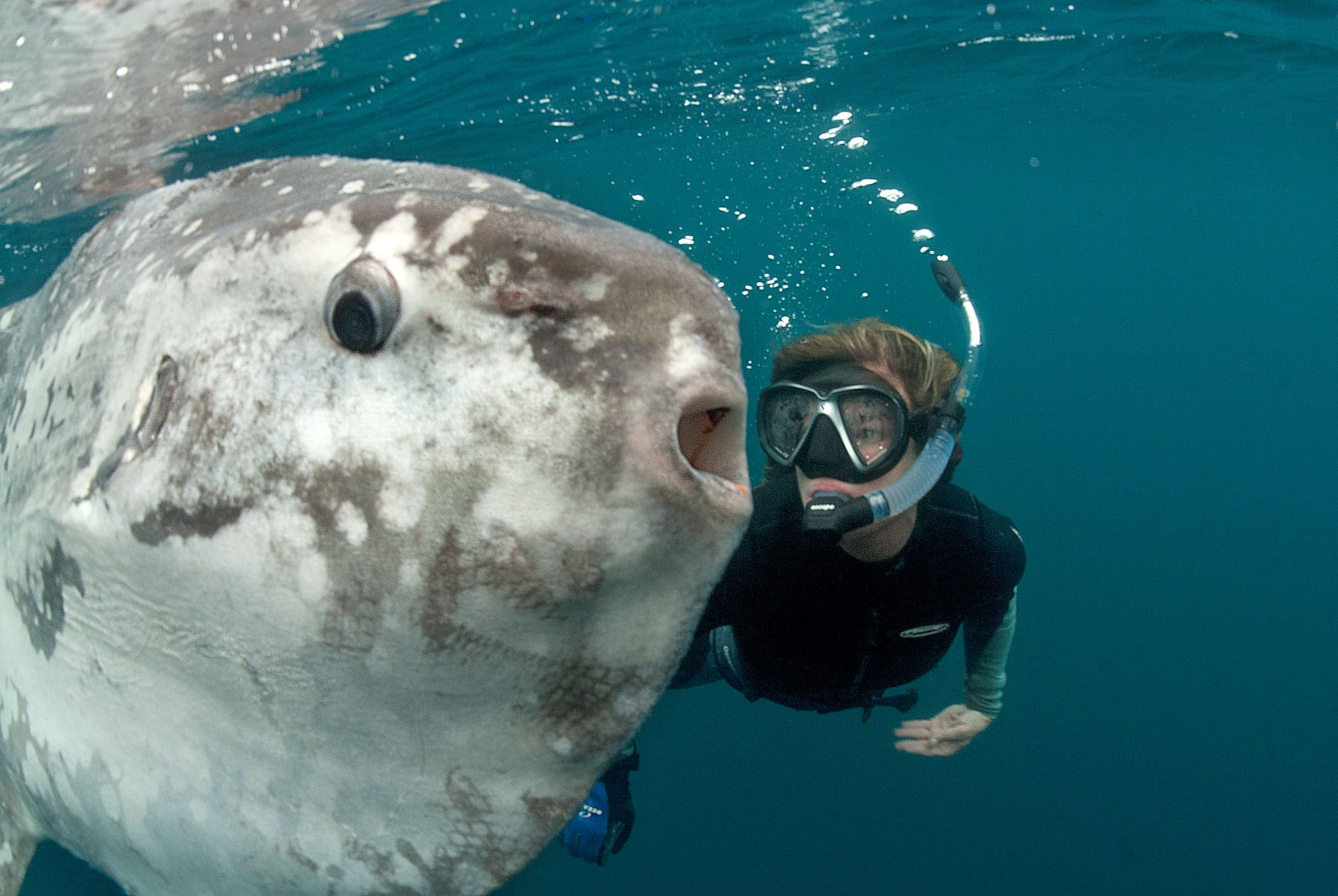
Tierney Thys has loved the ocean since she was a child growing up in California. Nowadays the marine biologist can often be found off the shores of the Galápagos, studying giant ocean sunfish as part of a larger effort to protect the region’s megafauna.
Her underwater explorations have revealed a bay where she says the sunfish have established “year-round residency” and a “cleaning station” some 260 feet deep where smaller fish scour the giants of their parasites.
Among multiple other projects, Thys is also training female Ecuadoran scientists in marine biotelemetry—the use of ultrasonic devices to detect and record movements of marine animals like whale sharks and turtles. Given the gender gap in the sciences, “training women scientists is of particular importance,” she says. “We need more female role models to show the possibilities that exist for young girls to embrace science as an exciting, critical, innovative, problem-solving, and life-sustaining career option.”
His Robots Raise Awareness
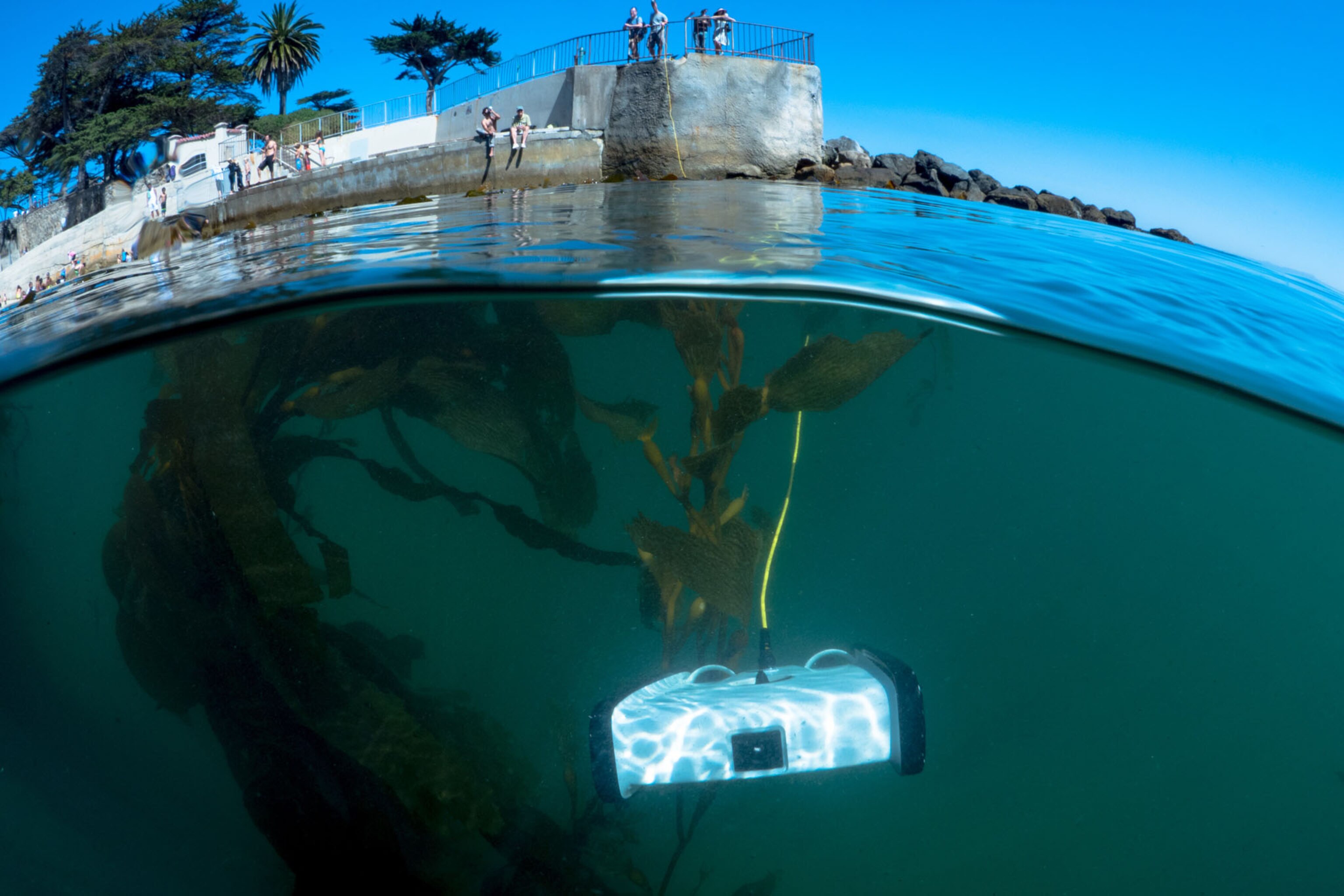
“We’re trying to empower citizen scientists to take a larger role in protecting their oceans,” says National Geographic Emerging Explorer David Lang. To do that, he’s offering people a powerful tool: robots.
Lang is the co-founder of OpenROV, which promotes deep-sea discovery using remotely operated vehicles. Over the course of the next year, the company will support citizen scientists, conservation organizations, and classrooms and supply drones for certain projects.
Each drone will be assigned a specific mission, from monitoring changes in marine species off the coast of California to scanning the Mediterranean Sea for shipwrecks and other signs of ancient life.
Once deployed, the underwater robots will allow people to explore the seas from dry land—and gain a deeper understanding of what needs to be protected, and why.
On the Turtle Trail
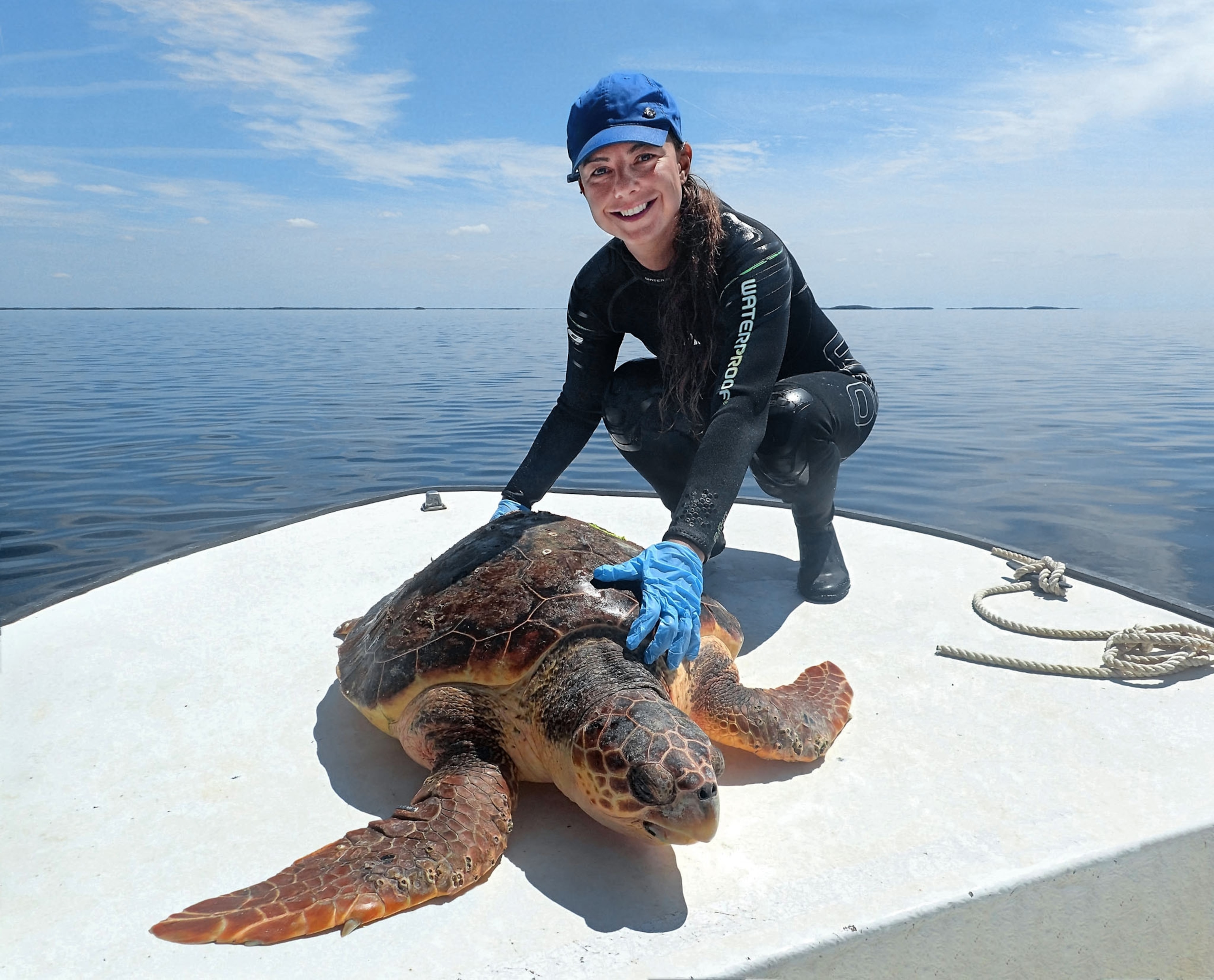
Hoisting hundred-plus-pound sea turtles up from the water and onto a boat is no easy task. But that’s what marine conservation biologist Mariana Fuentes does to help save the endangered reptiles.
Sea turtles live in warm waters across the globe. Fuentes’s current focus is the Bahamas, whose government has pledged to set aside 20 percent of its marine environment as a protected area.
Turtles weren’t Fuentes’s first love. “At first I wanted to work with manta rays,” she says, recalling a close encounter she had with one that had mistaken her for food. Then, while interning in Brazil—her native country—Fuentes became drawn to sea turtles, which can live for a century. “The fact that they are survivors,” she says, “made me want to conserve them.”

A Watchdog for the Whales
Asha de Vos’s superpower is action. Conservation of Sri Lanka’s blue whales was almost nonexistent when she started researching them. Today her videos and campaigns reach thousands of followers—all the way up to the government.
In 2003 de Vos began hitching rides on fishing and research vessels. She discovered that the whales were not migrating to food-rich areas and some were being hit by vessels traveling in shipping lanes.
As the first Sri Lankan to get a Ph.D. in marine mammal research, de Vos drew media attention to the issue, inspiring government intervention. This year she launched Oceanswell, Sri Lanka’s first organization focused solely on marine conservation research and education.
At Home, Underwater
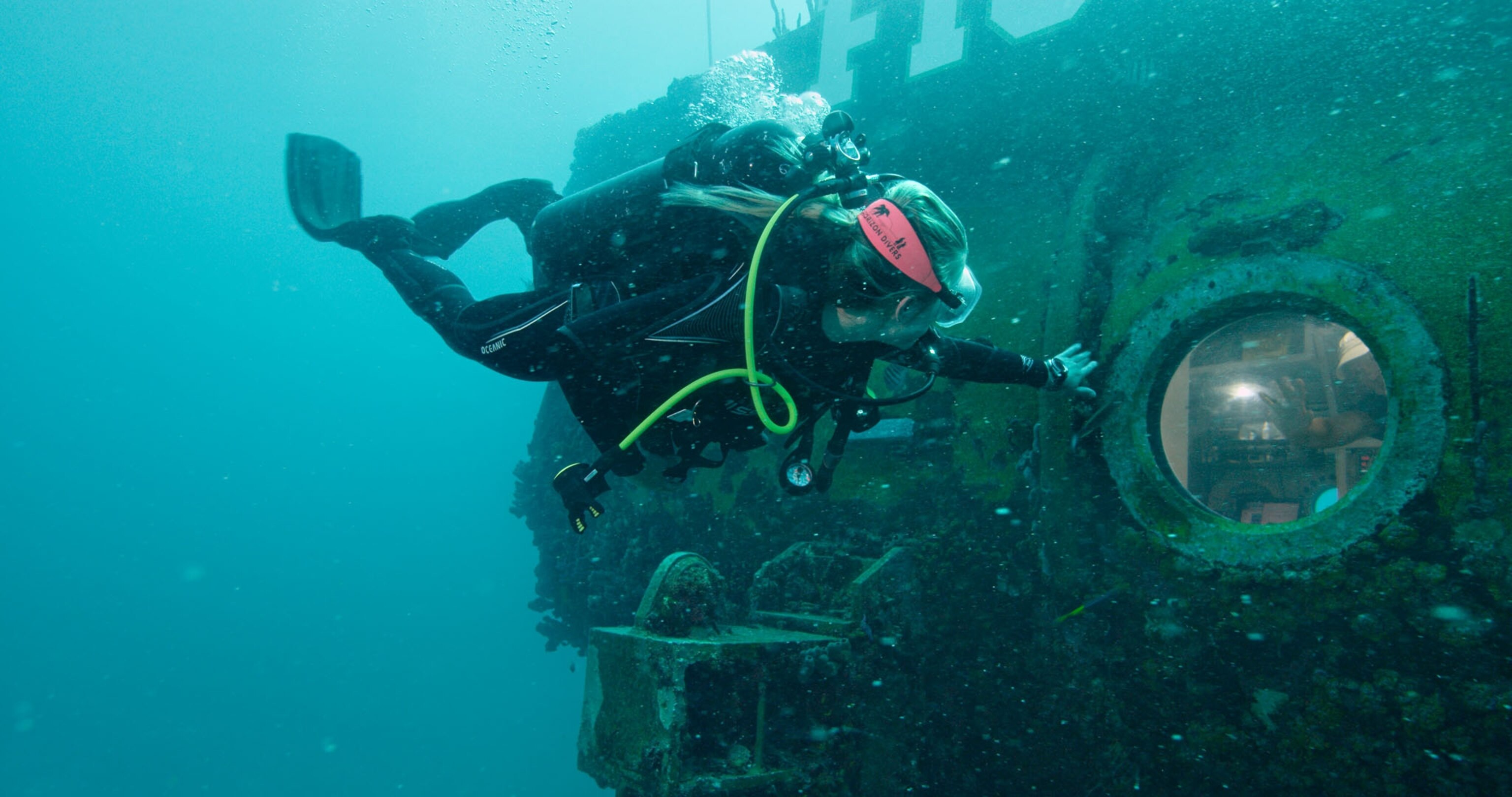
Grace Young once lived under the sea, spending 15 days in a 66-foot-deep research habitat off the Florida Keys. Eagle rays swam by her window. Groupers made eye contact. Being an aquanaut, she says, was a bit like being an astronaut, living in an alien world.
Young, a National Geographic emerging explorer, has focused her research on coral reefs: where they are, how they grow, and what’s happening to them. Looking at a healthy coral reef is like looking at a small city. There are apartments for fish, food grows nearby, and organisms as small as a millimeter or as long as a meter live in cramped spaces together. Understanding how they work is crucial to knowing how to protect them.
Young dives in the ecosystems she studies, but truly deciphering a reef requires more than simply seeing it up close. She’s devising underwater imaging systems that detect measures that eyes can’t, like nutrient flow, water temperature, and sound dynamics. “Many, if not most, marine animals see not with their eyes but with their ears,” she says. “We want to understand the reef from that perspective as well.”







